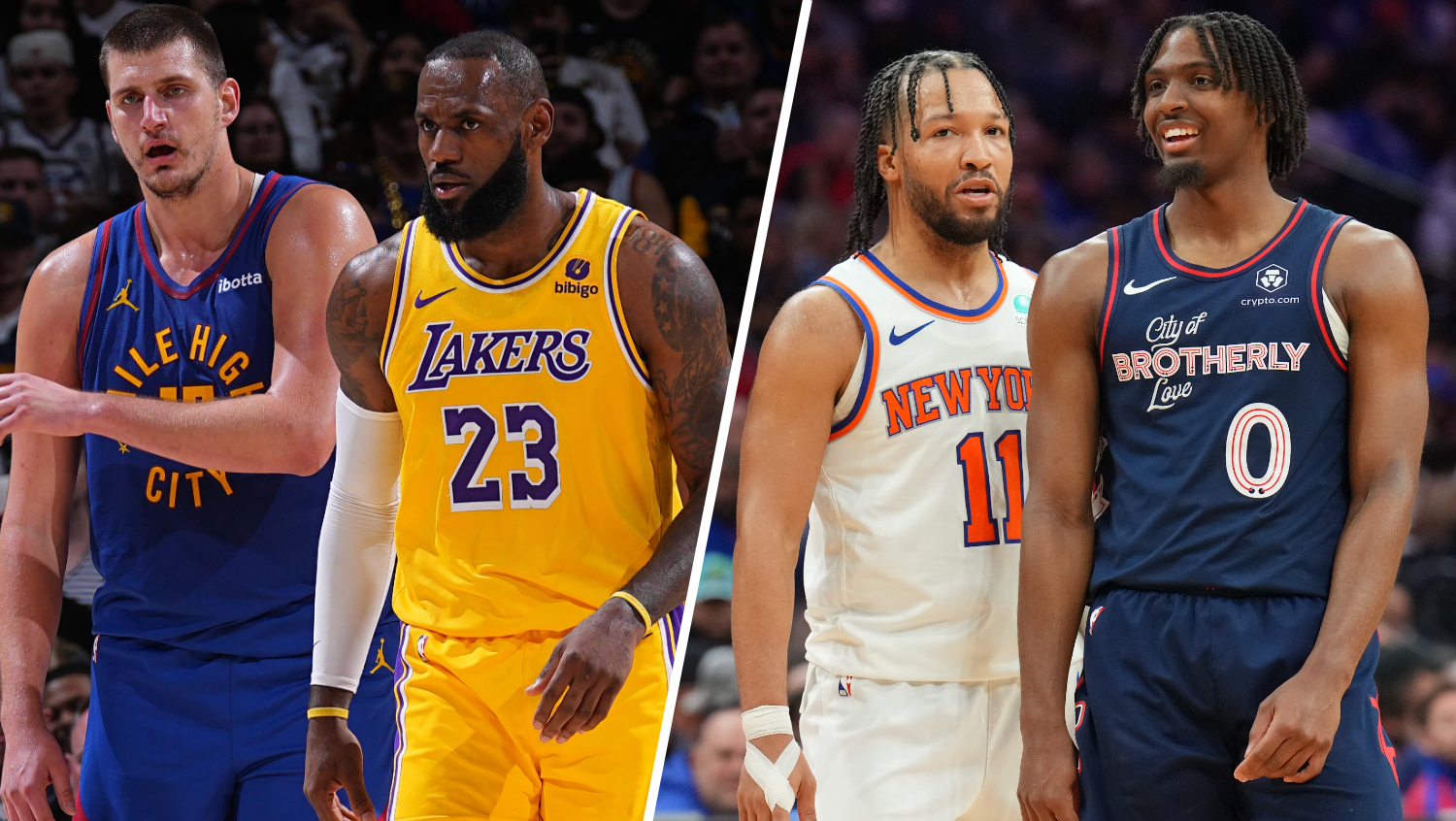Our scouting report on NBA draft prospect Elijah Hughes:
- Position: Wing
- Height: 6-6
- Weight: 215
- School: Syracuse
The ACC’s leading scorer this season, Elijah Hughes averaged 19.0 points, 4.9 rebounds, 3.4 assists, 1.2 steals and 0.8 blocks as a junior for the Orange.
Stay in the game with the latest updates on your beloved Philadelphia sports teams! Sign up here for our All Access Daily newsletter.
He’s a player whose offensive approach seems built for the current NBA. Over half of his field-goal attempts in his two seasons at Syracuse were from three-point range. When you watch his highlight tape, it’s almost exclusively either three-point attempts or layups and dunks.
Despite just finishing his junior season, Hughes is already 22 years old. He began his college career at East Carolina and had to sit out a year before playing his last two seasons for Syracuse.
Strengths
Hughes has deep range on his three-point shot and can make them in a variety of ways. With the ball in his hands, he’ll pull up and rise over defenders. He’s excellent at hitting threes in transition, and is particularly adept at getting his defender off balance with a jab step and then stepping back to hit a three. He understands the value of passing up long two-point jumpers in favor of three-point shots.
NBA
He shot 35.0 percent from three-point range in his two seasons at Syracuse, which may not sound that impressive, but there was often a high degree of difficulty on those shots. If he shoots more open catch-and-shoot threes in the NBA, he has a chance to be an above average three-point shooter. Good free throw shooters often translate into good NBA three-point shooters, and Hughes shot 81.3 percent from the charity stripe this season.
He’s also an excellent cutter, which led to a bunch of easy dunks in Syracuse’s system. He knows how to read his defender and when to make back door cuts. He’s also good in transition and threw down a lot of highlight-reel dunks.
On the defensive end of the floor, Hughes shows impressive timing on weak-side shot blocks. Averaging nearly a block per game is outstanding for a wing player.
Weaknesses
By necessity, Hughes often played point forward at Syracuse, a role that didn’t play to his strengths. He’s a decent passer but often made poor decisions, trying to force passes that weren’t there and committing needless turnovers. His ball handling skills are adequate for a wing, but at this stage he’s not the guy you want running pick-and-rolls in the NBA.
Hughes is a crafty finisher in the lane but still had major problems scoring inside against long, athletic defenders. He only shot 50.8 percent on two-point field goals this season, a low number considering most of those attempts came at the rim.
On the defensive end, Hughes will have to prove he can guard in man-to-man situations after playing almost exclusively in the 2-3 zone at Syracuse. He’s certainly a good athlete, but not a special athlete at the next level.
Fit
Hughes is a challenging prospect to project because his NBA role will be completely different than what he showed in college.
His best NBA role is probably 3-and-D guy, but will he be able to defend enough to stay on the floor?
Hughes’ age will also play against him on draft night. Some of the other wings in this draft are three or four years younger than him, with possibly greater upside.
On the plus side, I’m intrigued to see what he looks like with NBA point guards getting him open shots. Hughes had to do so much by himself at Syracuse. Now, he should get the chance to play a role that enhances his strengths while limiting his weaknesses.
There are enough question marks that Hughes may slip to the second round. If he’s still on the board when the Sixers pick at No. 34 or No. 36, it would make some sense to take a shot on Hughes’ offensive potential.
If Hughes proves to be a below-average defender, guys like Ben Simmons and Matisse Thybulle can help pick up the slack. The Sixers still need shooting and Hughes could help in that regard.


